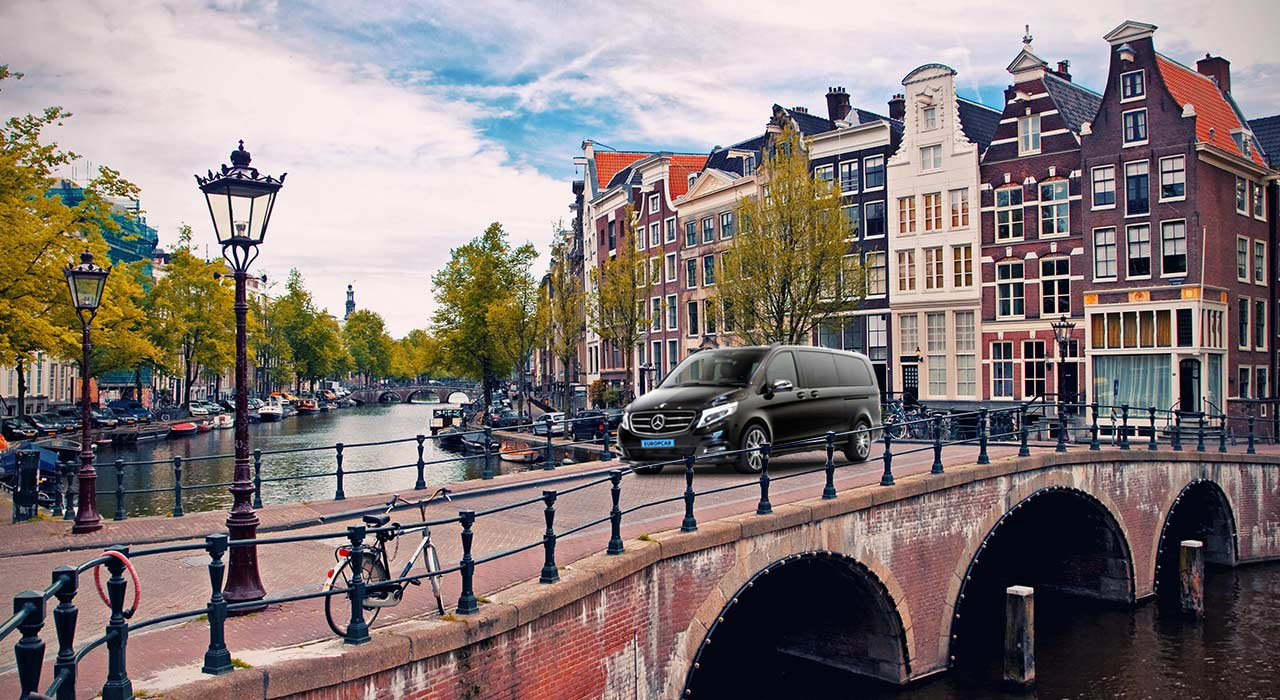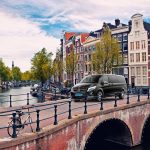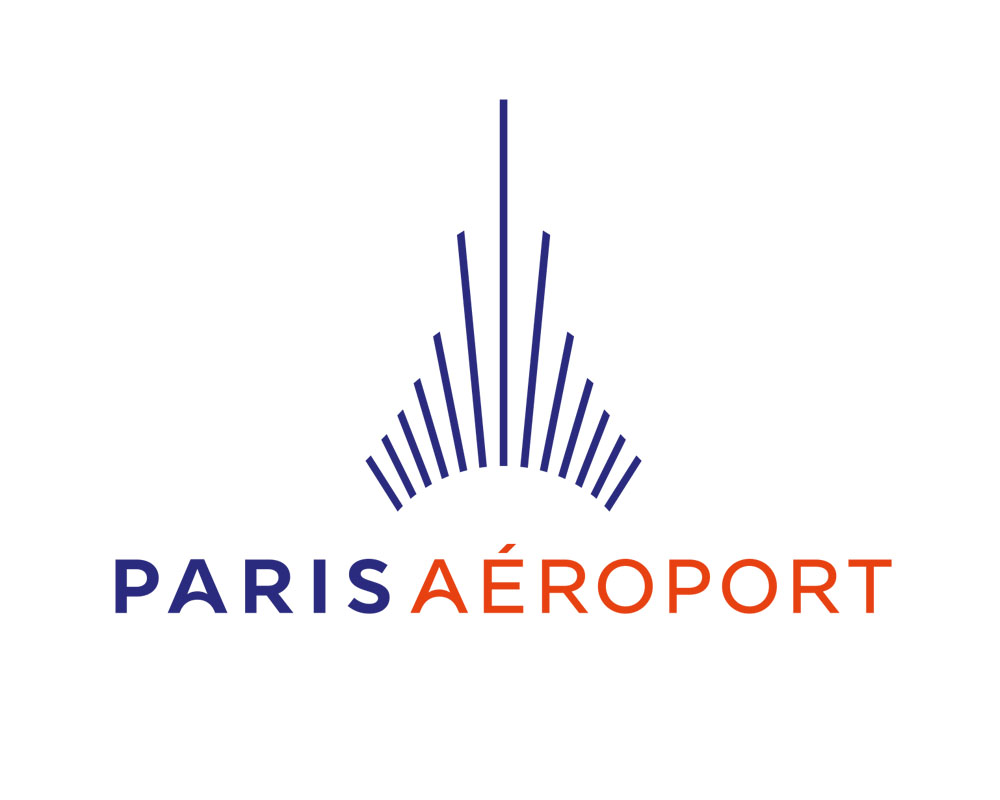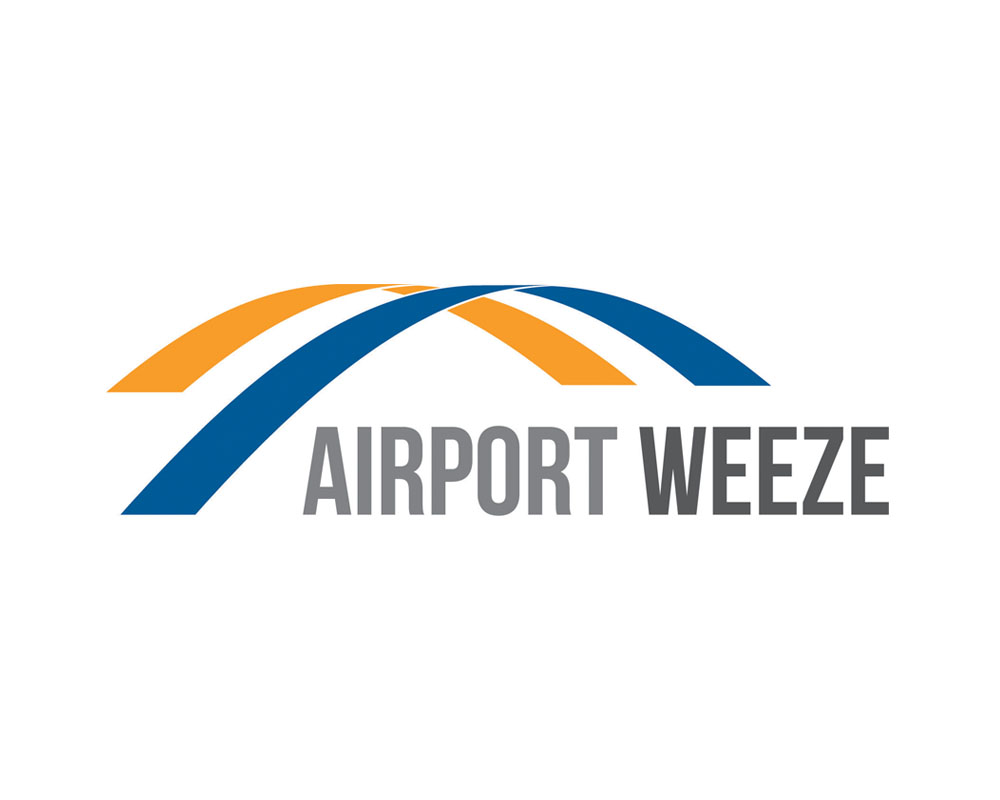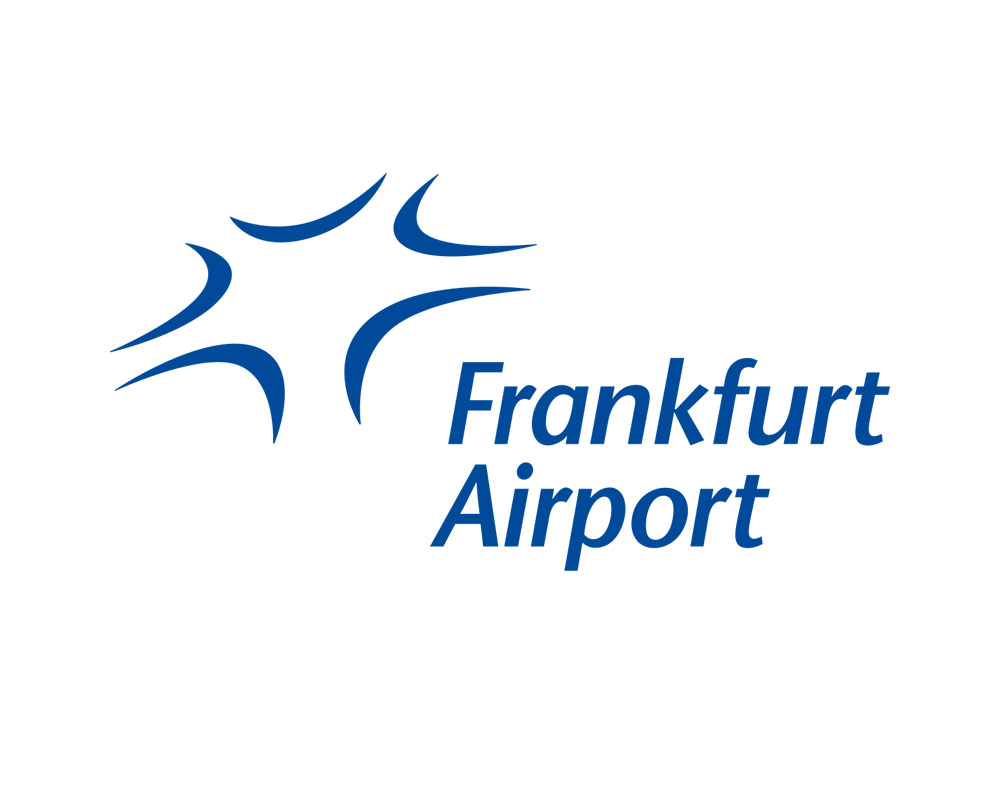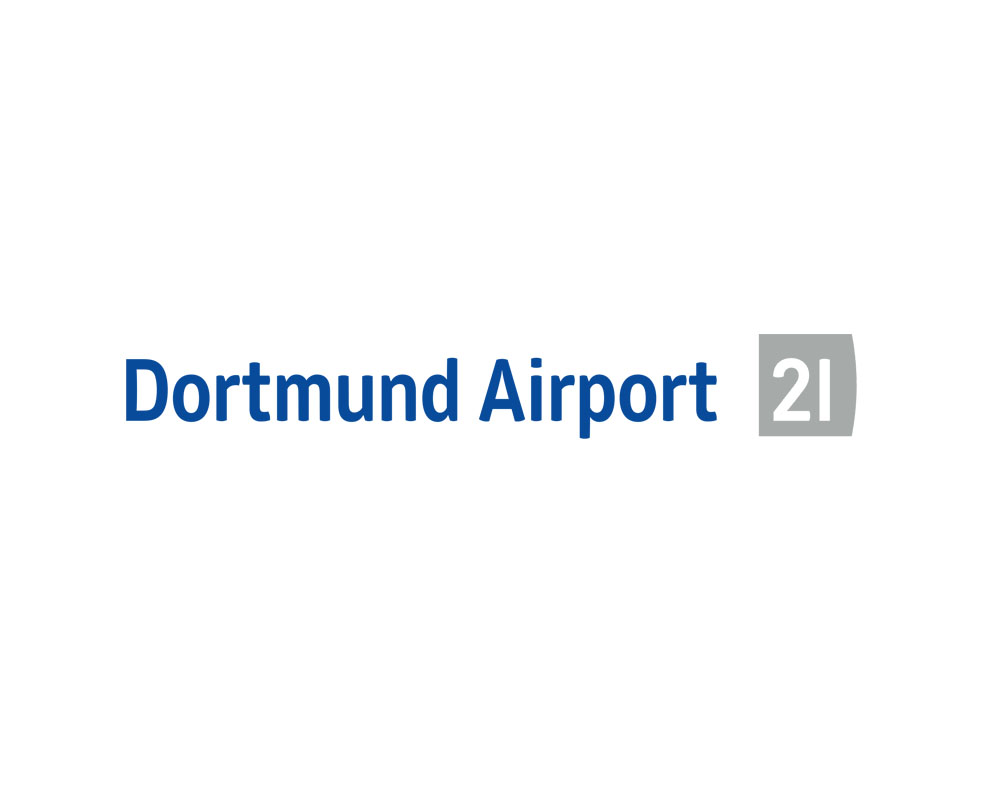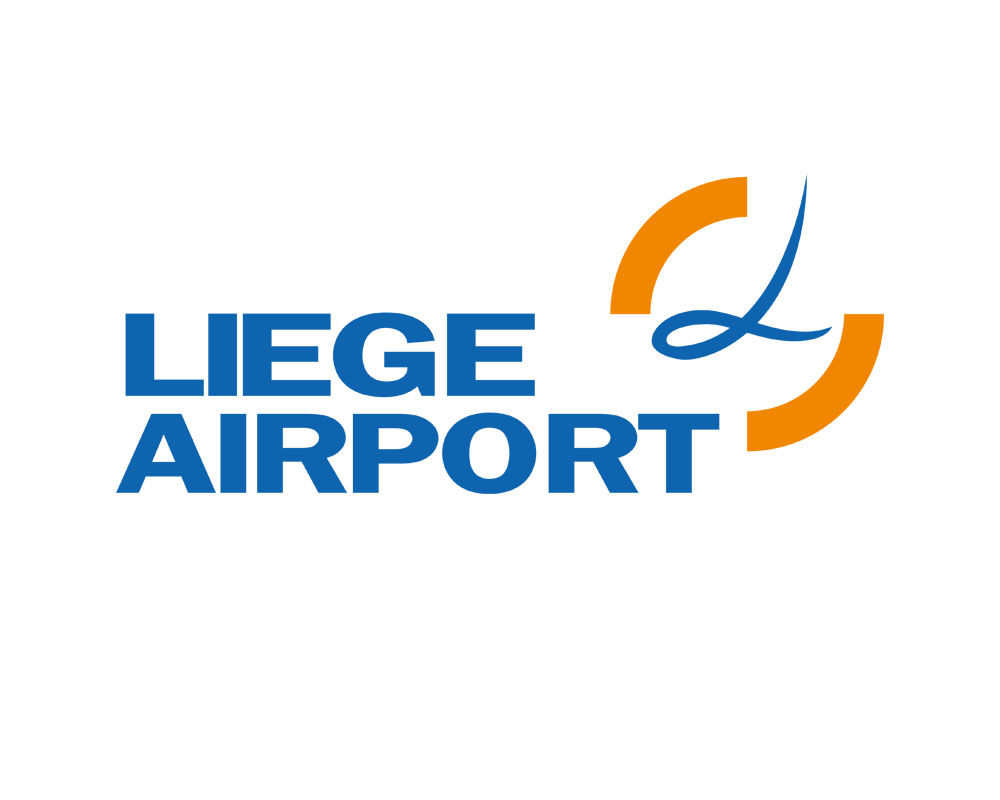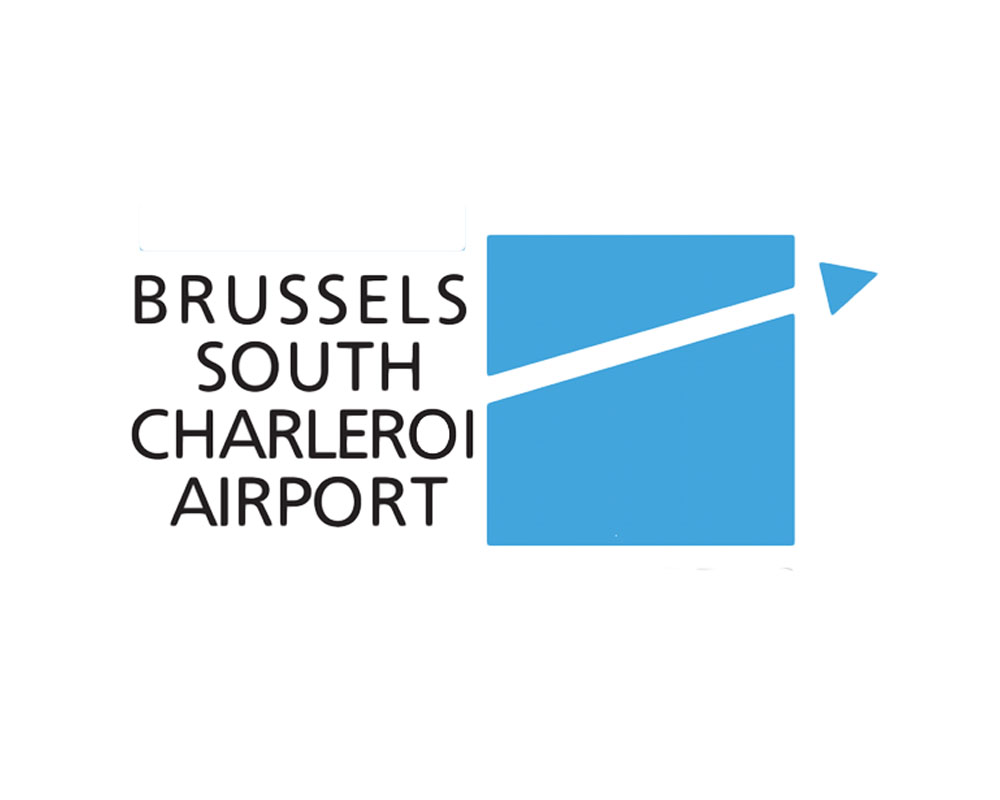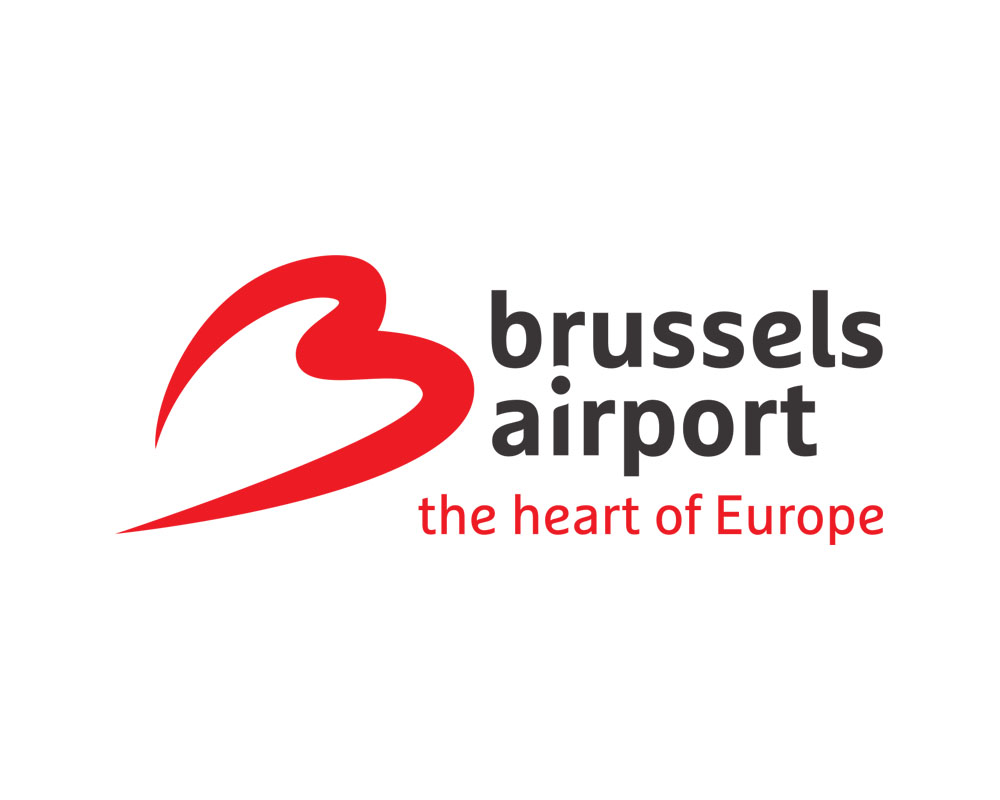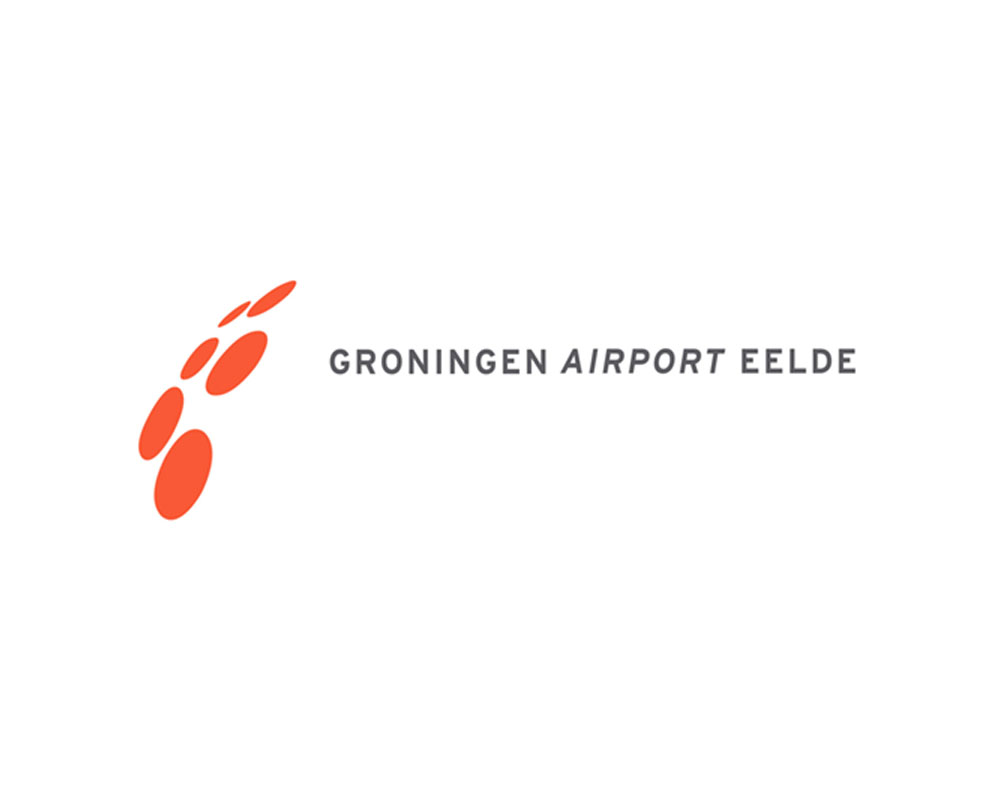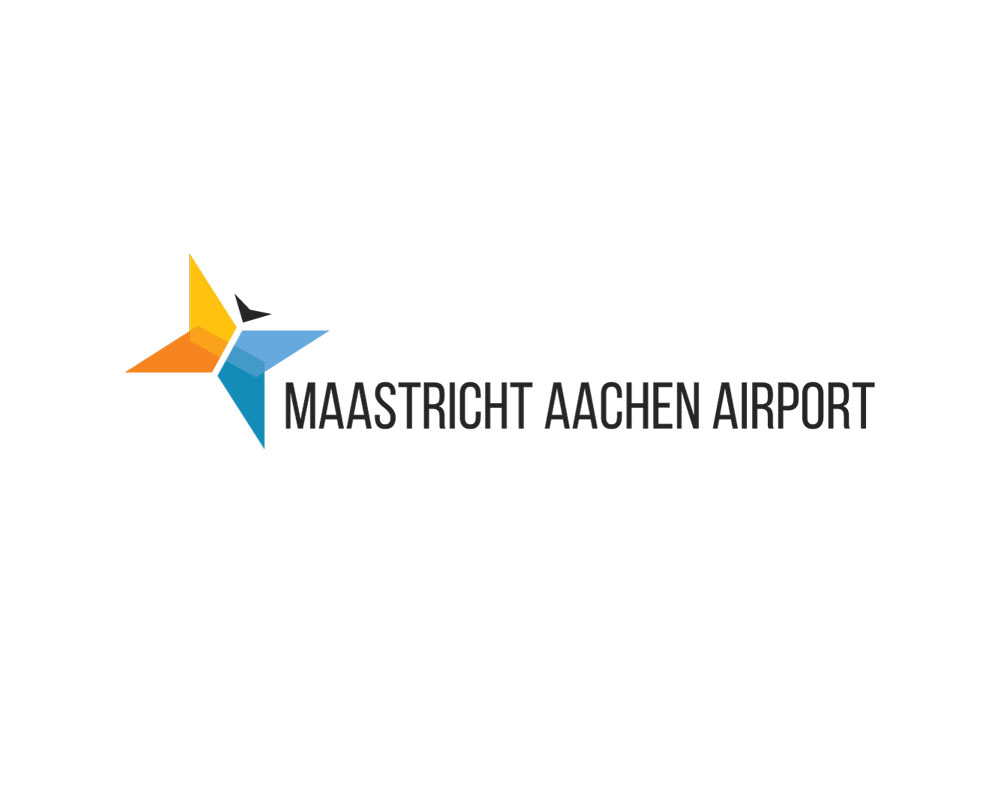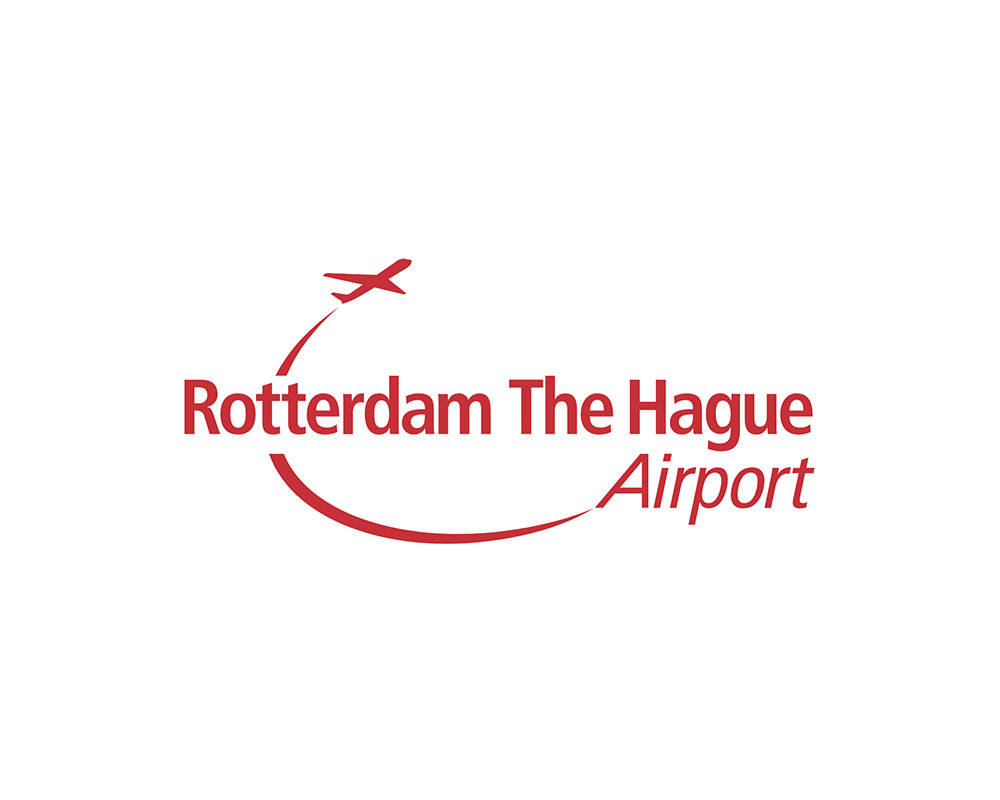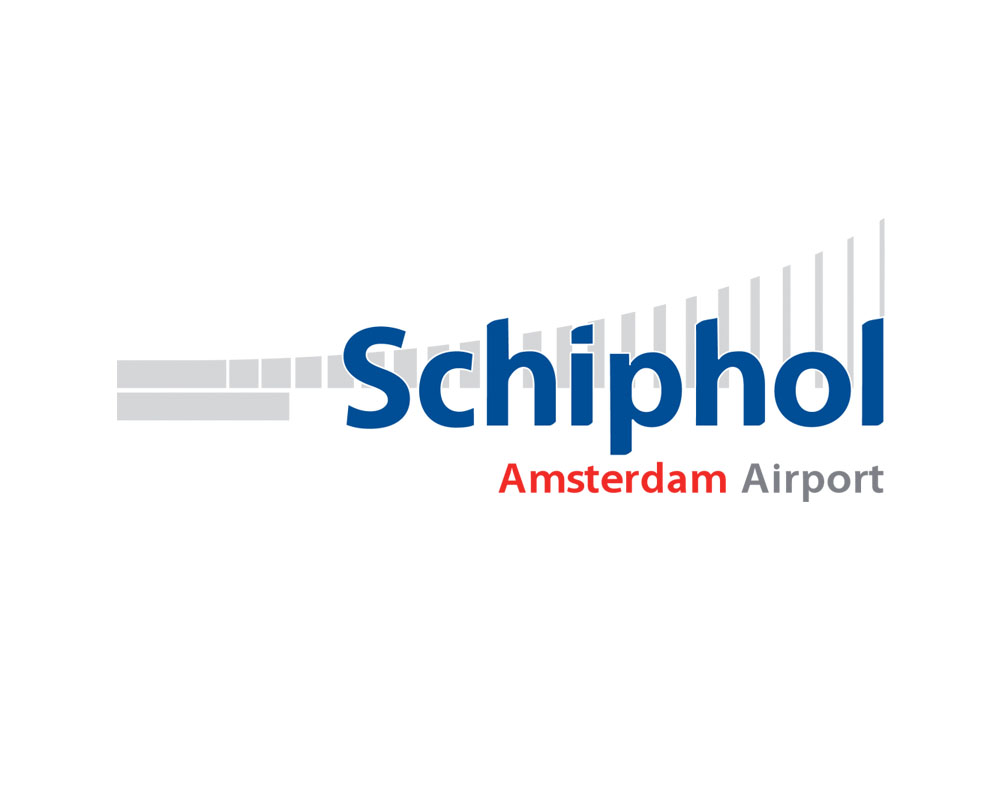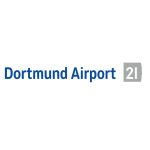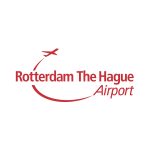Info
Description
Munich is the capital and most populous city of the second most populous German federal state of Bavaria, and, with a population of around 1.5 million, it is the third-largest city of Germany after Berlin and Hamburg, as well as the 12th-largest city in the European Union. The city’s metropolitan region is home to 6 million people. Straddling the banks of the River Isar (a tributary of the Danube) north of the Bavarian Alps, it is the seat of the Bavarian administrative region of Upper Bavaria, while being the most densely populated municipality in Germany (4,500 people per km²). Munich is the second-largest city in the Bavarian dialect area, after the Austrian capital of Vienna. The city is a major centre of art, technology, finance, publishing, culture, innovation, education, business, and tourism in Germany and Europe and enjoys a very high standard and quality of living, reaching first in Germany and third worldwide according to the 2018 Mercer survey, and being rated the world’s most liveable city by the Monocle’s Quality of Life Survey 2018. According to the Globalization and World Rankings Research Institute Munich is considered an alpha-world city, as of 2015. Munich is home to many universities, museums and theatres. Its numerous architectural attractions, sports events, exhibitions and its annual Oktoberfest attract considerable tourism. Munich is one of the most prosperous and fastest growing cities in Germany. It is a top-ranked destination for migration and expatriate location. Munich hosts more than 530,000 people of foreign background, making up 37.7% of its population.
Book Munich Tour
Top-rated Sights & Attractions
Munich Residenz
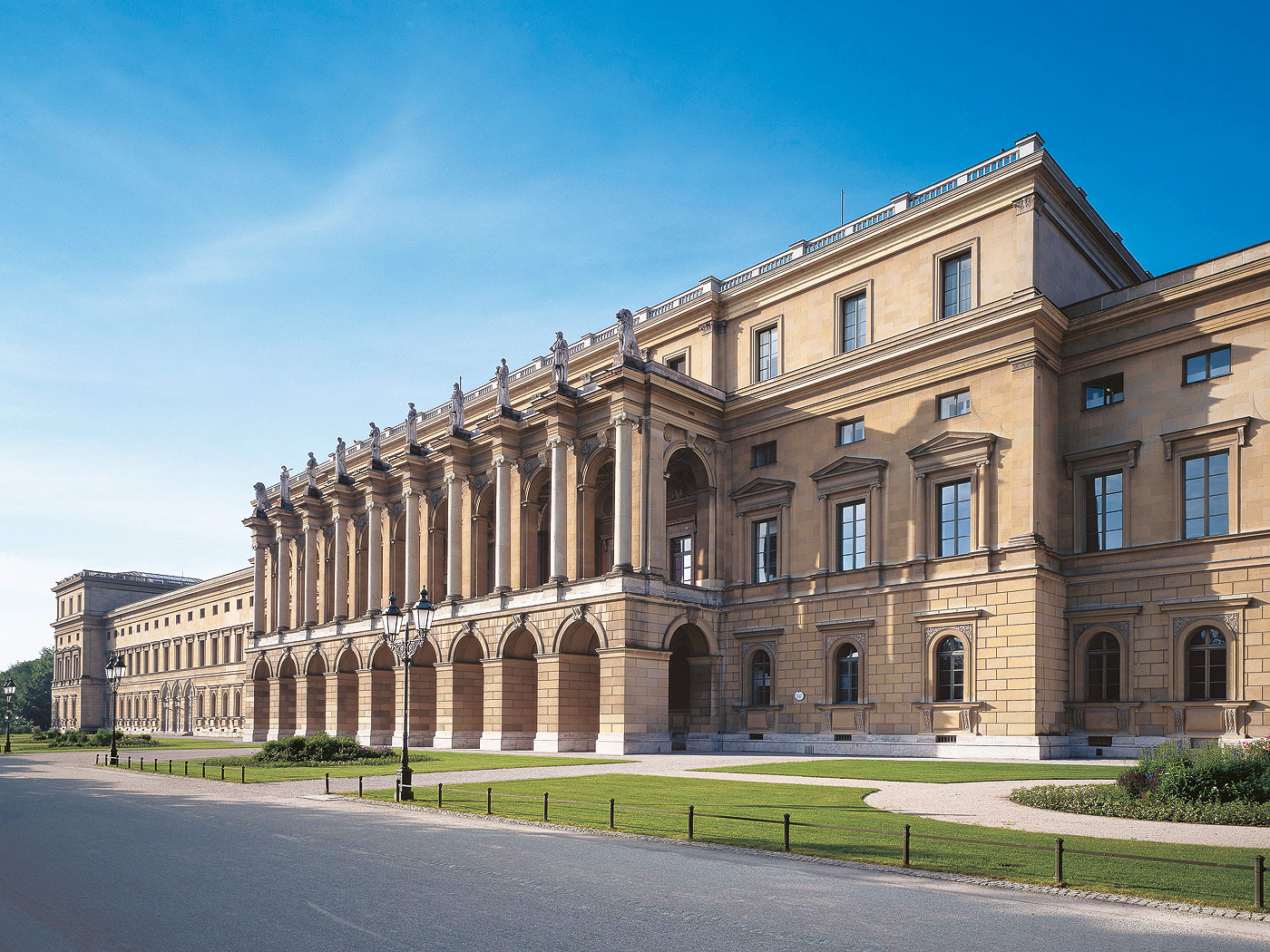 The Residenz (Residence) in central Munich is the former royal palace of the Wittelsbach monarchs of Bavaria. The Residenz is the largest city palace in Germany and is today open to visitors for its architecture, room decorations, and displays from the former royal collections. The complex of buildings contains ten courtyards and displays 130 rooms. The three main parts are the Königsbau (near the Max-Joseph-Platz), the Alte Residenz (Old Residenz; towards the Residenzstraße) and the Festsaalbau (towards the Hofgarten). A wing of the Festsaalbau contains the Cuvilliés Theatre since the reconstruction of the Residenz after World War II. It also houses the Herkulessaal (Hercules Hall), the primary concert venue for the Bavarian Radio Symphony Orchestra. The Byzantine Court Church of All Saints (Allerheiligen-Hofkirche) at the east side is facing the Marstall, the building for the former Court Riding School and the royal stables.
The Residenz (Residence) in central Munich is the former royal palace of the Wittelsbach monarchs of Bavaria. The Residenz is the largest city palace in Germany and is today open to visitors for its architecture, room decorations, and displays from the former royal collections. The complex of buildings contains ten courtyards and displays 130 rooms. The three main parts are the Königsbau (near the Max-Joseph-Platz), the Alte Residenz (Old Residenz; towards the Residenzstraße) and the Festsaalbau (towards the Hofgarten). A wing of the Festsaalbau contains the Cuvilliés Theatre since the reconstruction of the Residenz after World War II. It also houses the Herkulessaal (Hercules Hall), the primary concert venue for the Bavarian Radio Symphony Orchestra. The Byzantine Court Church of All Saints (Allerheiligen-Hofkirche) at the east side is facing the Marstall, the building for the former Court Riding School and the royal stables.
Asam Church
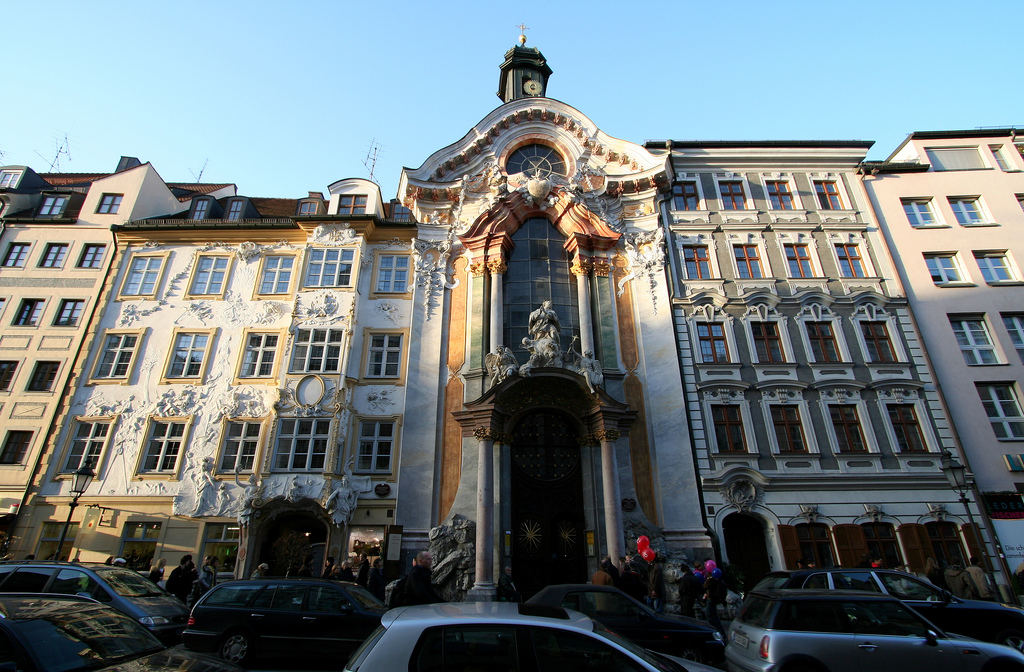 St. Johann Nepomuk, better known as the Asam Church (German: Asamkirche), is a Baroque church in Munich, southern Germany, built from 1733 to 1746 by the brothers, sculptor Egid Quirin Asam, and painter Cosmas Damian Asam as their private church. It is considered to be one of the most important buildings of the southern German Late Baroque.
St. Johann Nepomuk, better known as the Asam Church (German: Asamkirche), is a Baroque church in Munich, southern Germany, built from 1733 to 1746 by the brothers, sculptor Egid Quirin Asam, and painter Cosmas Damian Asam as their private church. It is considered to be one of the most important buildings of the southern German Late Baroque.
Frauenkirche
 The Frauenkirche is a church in the Bavarian city of Munich that serves as the cathedral of the Archdiocese of Munich and Freising and seat of its Archbishop. It is a landmark and is considered a symbol of the Bavarian capital city. Although called “Münchner Dom” (Munich Cathedral) on its website and URL, the church is always referred to as “Frauenkirche” by locals. The church towers are widely visible because of local height limits. According to the narrow outcome of a local plebiscite, city administration prohibits buildings with a height exceeding 99 m in the city center. Since November 2004, this prohibition has been provisionally extended outward and as a result, no buildings may be built in the city over the aforementioned height. The south tower which is normally open to those wishing to climb the stairs, will, on completion of its current renovation, offer a unique view of Munich and the nearby Alps.
The Frauenkirche is a church in the Bavarian city of Munich that serves as the cathedral of the Archdiocese of Munich and Freising and seat of its Archbishop. It is a landmark and is considered a symbol of the Bavarian capital city. Although called “Münchner Dom” (Munich Cathedral) on its website and URL, the church is always referred to as “Frauenkirche” by locals. The church towers are widely visible because of local height limits. According to the narrow outcome of a local plebiscite, city administration prohibits buildings with a height exceeding 99 m in the city center. Since November 2004, this prohibition has been provisionally extended outward and as a result, no buildings may be built in the city over the aforementioned height. The south tower which is normally open to those wishing to climb the stairs, will, on completion of its current renovation, offer a unique view of Munich and the nearby Alps.
Marienplatz and New Town Hall
 Marienplatz is a central square in the city centre of Munich, Germany. It has been the city’s main square since 1158. The New Town Hall Neues Rathaus) is a town hall at the northern part of Marienplatz in Munich, Bavaria, Germany. It hosts the city government including the city council, offices of the mayors and a small portion part of the administration. In 1874 the municipality had left the Old Town Hall for its new domicile.
Marienplatz is a central square in the city centre of Munich, Germany. It has been the city’s main square since 1158. The New Town Hall Neues Rathaus) is a town hall at the northern part of Marienplatz in Munich, Bavaria, Germany. It hosts the city government including the city council, offices of the mayors and a small portion part of the administration. In 1874 the municipality had left the Old Town Hall for its new domicile.
St. Peter’s Church
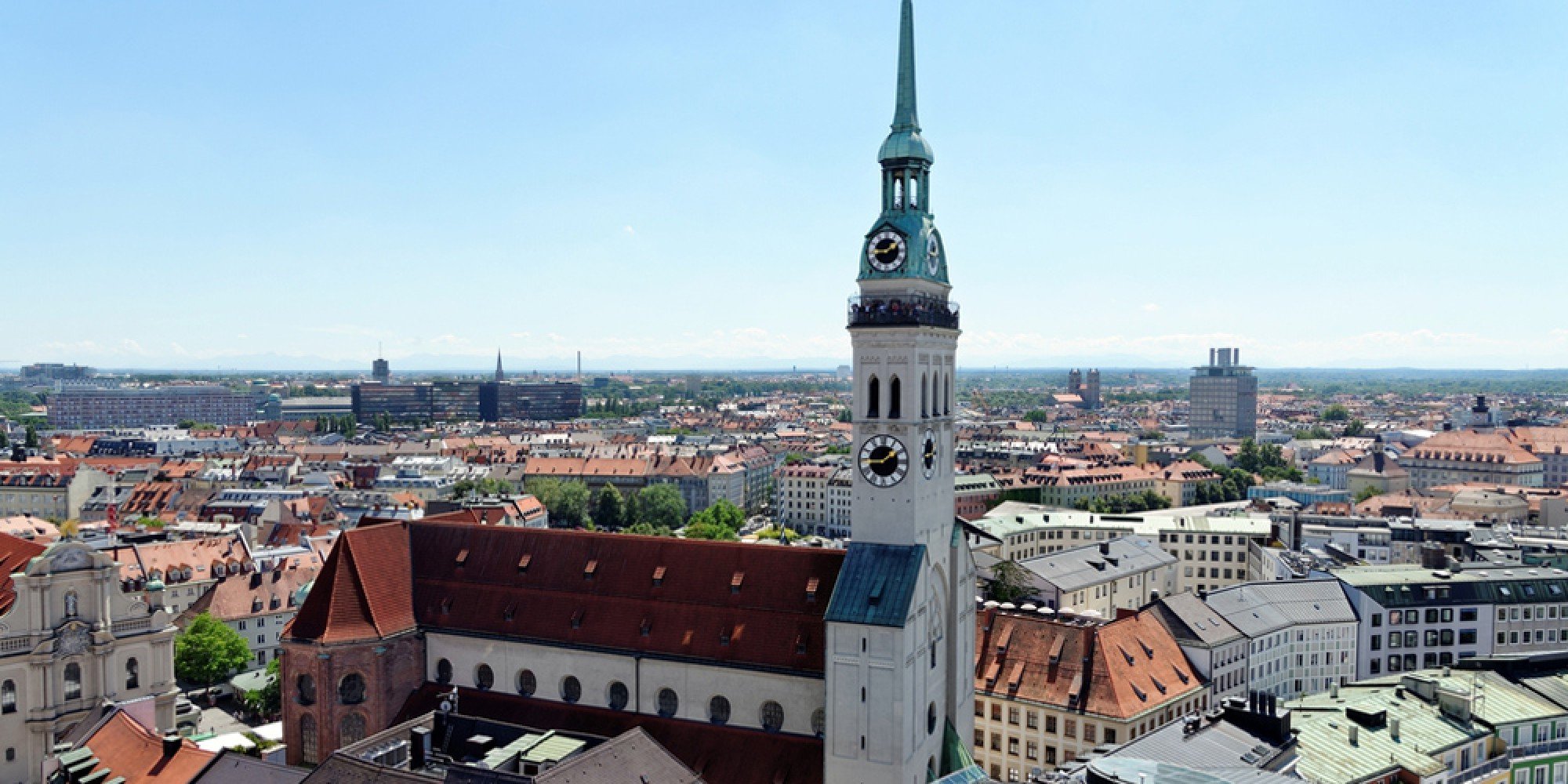 St Peter’s Church is a Roman Catholic church in the inner city of Munich, southern Germany. It is the oldest church in the district. Before the foundation of Munich as a city in 1158, there had been a pre-Merovingian church on this site. 8th century monks lived around this church on a hill called Petersbergl. At the end of the 12th century a new church in the Bavarian Romanesque style was consecrated, and expanded in Gothic style shortly before the great fire in 1327, which destroyed the building. After its reconstruction the church was dedicated anew in 1368. In the early 17th century the 91 meter spire received its Renaissance steeple top and a new Baroque choir was added. The interior is dominated by the high altar to which Erasmus Grasser contributed the figure of Saint Peter. Among other masterpieces of all periods are five Gothic paintings by Jan Polack and several altars by Ignaz Günther. The ceiling fresco by Johann Baptist Zimmermann (1753–56) was restored in 1999-2000. The parish church of Saint Peter, whose 91 meters high tower is commonly known as “Alter Peter” – Old Pete – and which is emblematic of Munich, is the oldest recorded parish church in Munich and presumably the originating point for the whole city.
St Peter’s Church is a Roman Catholic church in the inner city of Munich, southern Germany. It is the oldest church in the district. Before the foundation of Munich as a city in 1158, there had been a pre-Merovingian church on this site. 8th century monks lived around this church on a hill called Petersbergl. At the end of the 12th century a new church in the Bavarian Romanesque style was consecrated, and expanded in Gothic style shortly before the great fire in 1327, which destroyed the building. After its reconstruction the church was dedicated anew in 1368. In the early 17th century the 91 meter spire received its Renaissance steeple top and a new Baroque choir was added. The interior is dominated by the high altar to which Erasmus Grasser contributed the figure of Saint Peter. Among other masterpieces of all periods are five Gothic paintings by Jan Polack and several altars by Ignaz Günther. The ceiling fresco by Johann Baptist Zimmermann (1753–56) was restored in 1999-2000. The parish church of Saint Peter, whose 91 meters high tower is commonly known as “Alter Peter” – Old Pete – and which is emblematic of Munich, is the oldest recorded parish church in Munich and presumably the originating point for the whole city.
Englischer Garten
 The Englischer Garten (English Garden) is a large public park in the centre of Munich, Bavaria, stretching from the city centre to the northeastern city limits. It was created in 1789 by Sir Benjamin Thompson (1753–1814), later Count Rumford (Reichsgraf von Rumford), for Prince Charles Theodore, Elector of Bavaria. Thompson’s successors, Reinhard von Werneck (1757–1842) and Friedrich Ludwig von Sckell (1750–1823), advisers on the project from its beginning, both extended and improved the park. With an area of 3.7 km2 (1.4 sq mi) (370 ha or 910 acres), the Englischer Garten is one of world’s largest urban public parks. The name refers to its English garden form of informal landscape, a style popular in England from the mid-18th century to the early 19th century and particularly associated with Capability Brown.
The Englischer Garten (English Garden) is a large public park in the centre of Munich, Bavaria, stretching from the city centre to the northeastern city limits. It was created in 1789 by Sir Benjamin Thompson (1753–1814), later Count Rumford (Reichsgraf von Rumford), for Prince Charles Theodore, Elector of Bavaria. Thompson’s successors, Reinhard von Werneck (1757–1842) and Friedrich Ludwig von Sckell (1750–1823), advisers on the project from its beginning, both extended and improved the park. With an area of 3.7 km2 (1.4 sq mi) (370 ha or 910 acres), the Englischer Garten is one of world’s largest urban public parks. The name refers to its English garden form of informal landscape, a style popular in England from the mid-18th century to the early 19th century and particularly associated with Capability Brown.
Kunstareal Art Museums District
 The Kunstareal (art district) is a museum quarter in the city centre of Munich, Germany. It consists of the three “Pinakotheken” galleries (Alte Pinakothek, Neue Pinakothek and Pinakothek der Moderne), the Glyptothek, the Staatliche Antikensammlungen (both museums are specialized in Greek and Roman art), the Lenbachhaus, the Museum Brandhorst (a private collection of modern art) and several galleries. Also the Staatliche Sammlung für Ägyptische Kunst (the state collection of Egypt art) was moved to the Kunstareal in 2013. The history of the museums in this area of Munich began in 1816 with the erection of the Glyptothek at Königsplatz and was completed with the new building for the Egyptian Museum (2012) and the extension of the Lenbachhaus (2013). Close to the Pinakothek der Moderne the neo-classical Palais Dürckheim (constructed in 1842–1844) served at times as a building dedicated to bringing art closer to the visitors, while the adjoining Türkentor (1826), the gate of a demolished royal caserne, is set to become a display window for temporary contemporary art. As of 2009 a general project plan is under discussion to ensure the integration of the different museum buildings and to improve the access to the art district from the inner city.
The Kunstareal (art district) is a museum quarter in the city centre of Munich, Germany. It consists of the three “Pinakotheken” galleries (Alte Pinakothek, Neue Pinakothek and Pinakothek der Moderne), the Glyptothek, the Staatliche Antikensammlungen (both museums are specialized in Greek and Roman art), the Lenbachhaus, the Museum Brandhorst (a private collection of modern art) and several galleries. Also the Staatliche Sammlung für Ägyptische Kunst (the state collection of Egypt art) was moved to the Kunstareal in 2013. The history of the museums in this area of Munich began in 1816 with the erection of the Glyptothek at Königsplatz and was completed with the new building for the Egyptian Museum (2012) and the extension of the Lenbachhaus (2013). Close to the Pinakothek der Moderne the neo-classical Palais Dürckheim (constructed in 1842–1844) served at times as a building dedicated to bringing art closer to the visitors, while the adjoining Türkentor (1826), the gate of a demolished royal caserne, is set to become a display window for temporary contemporary art. As of 2009 a general project plan is under discussion to ensure the integration of the different museum buildings and to improve the access to the art district from the inner city.
Nymphenburg Palace
 The Nymphenburg Palace (Schloss Nymphenburg), i. e., “Castle of the Nymph (or Nymphs)”, is a Baroque palace in Munich, Bavaria, southern Germany. The palace was the main summer residence of the former rulers of Bavaria of the House of Wittelsbach.
The Nymphenburg Palace (Schloss Nymphenburg), i. e., “Castle of the Nymph (or Nymphs)”, is a Baroque palace in Munich, Bavaria, southern Germany. The palace was the main summer residence of the former rulers of Bavaria of the House of Wittelsbach.
Cuvilliés Theater
 The Cuvilliés Theatre or Old Residence Theatre (Altes Residenztheater) is the former court theatre of the Residenz in Munich, Bavaria, Germany. Theater was built in 1755 and is the finest example of a Rococo theater with tiered boxes in Germany. The magnificent carved woodwork of the auditorium, with its four tiers of boxes, including one built especially for the electors, was safely stored away during WWII, thus allowing its reconstruction in 1958. Architecturally stunning, the rare elegance and rich hues of its intimate Rococo interior makes it a truly unique setting for operas such as Mozart’s Idomeneo, which premiered here in 1781, and which, along with many other Late Baroque period operas, is still performed on occasion. You can visit the theater separately or on a combined ticket with the Residenz and its museums.
The Cuvilliés Theatre or Old Residence Theatre (Altes Residenztheater) is the former court theatre of the Residenz in Munich, Bavaria, Germany. Theater was built in 1755 and is the finest example of a Rococo theater with tiered boxes in Germany. The magnificent carved woodwork of the auditorium, with its four tiers of boxes, including one built especially for the electors, was safely stored away during WWII, thus allowing its reconstruction in 1958. Architecturally stunning, the rare elegance and rich hues of its intimate Rococo interior makes it a truly unique setting for operas such as Mozart’s Idomeneo, which premiered here in 1781, and which, along with many other Late Baroque period operas, is still performed on occasion. You can visit the theater separately or on a combined ticket with the Residenz and its museums.
BMW Museum
 The BMW Museum is an automobile museum of BMW history located near the Olympiapark in Munich, Germany. The museum was established in 1973, shortly after the Summer Olympics opened. From 2004 to 2008, it was renovated in connection with the construction of the BMW Welt, directly opposite. The museum reopened on June 21, 2008.
The BMW Museum is an automobile museum of BMW history located near the Olympiapark in Munich, Germany. The museum was established in 1973, shortly after the Summer Olympics opened. From 2004 to 2008, it was renovated in connection with the construction of the BMW Welt, directly opposite. The museum reopened on June 21, 2008.
Deutsches Museum
 The Deutsches Museum in Munich, Germany, is the world’s largest museum of science and technology, with about 28,000 exhibited objects from 50 fields of science and technology. It receives about 1.5 million visitors per year. The museum was founded on 28 June 1903, at a meeting of the Association of German Engineers (VDI) as an initiative of Oskar von Miller. It is the largest museum in Munich. For a period of time the museum was used to host pop and rock concerts including The Who, Jimi Hendrix and Elton John.
The Deutsches Museum in Munich, Germany, is the world’s largest museum of science and technology, with about 28,000 exhibited objects from 50 fields of science and technology. It receives about 1.5 million visitors per year. The museum was founded on 28 June 1903, at a meeting of the Association of German Engineers (VDI) as an initiative of Oskar von Miller. It is the largest museum in Munich. For a period of time the museum was used to host pop and rock concerts including The Who, Jimi Hendrix and Elton John.
Viktualienmarkt
 The Viktualienmarkt is a daily food market and a square in the center of Munich, Germany. The Viktualienmarkt developed from an original farmers’ market to a popular market for gourmets. In an area covering 22,000 m2 (240,000 sq ft), 140 stalls and shops offer flowers, exotic fruit, game, poultry, spices, cheese, fish, juices and so on. Most stalls and shops are open during the official opening hours (Monday to Saturday 8 a.m. until 8 p.m.); but the Biergarten doesn’t open until 9 a.m. Many stalls close at 6 p.m., before the standard closing time. There are special opening hours for flower shops, bakeries and restaurants.
The Viktualienmarkt is a daily food market and a square in the center of Munich, Germany. The Viktualienmarkt developed from an original farmers’ market to a popular market for gourmets. In an area covering 22,000 m2 (240,000 sq ft), 140 stalls and shops offer flowers, exotic fruit, game, poultry, spices, cheese, fish, juices and so on. Most stalls and shops are open during the official opening hours (Monday to Saturday 8 a.m. until 8 p.m.); but the Biergarten doesn’t open until 9 a.m. Many stalls close at 6 p.m., before the standard closing time. There are special opening hours for flower shops, bakeries and restaurants.
Theatine Church of St. Cajetan
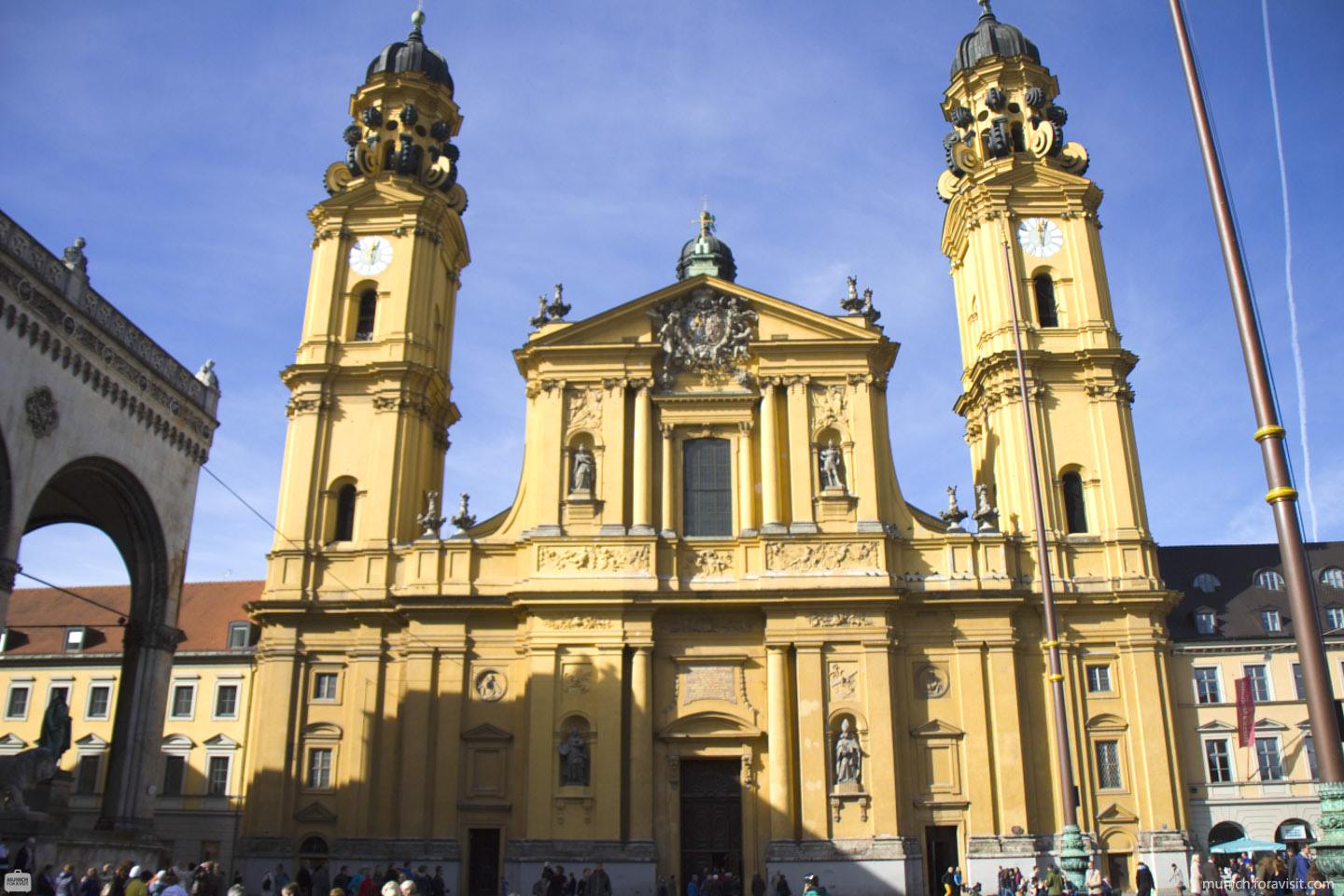 The Theatine Church of St. Cajetan (German: Theatinerkirche St. Kajetan) is a Catholic church in Munich, southern Germany. Built from 1663 to 1690, it was founded by Elector Ferdinand Maria and his wife, Henriette Adelaide of Savoy, as a gesture of thanks for the birth of the long-awaited heir to the Bavarian crown, Prince Max Emanuel, in 1662. Now administered by the Dominican Friars, it is also known as the Dominican Priory of St. Cajetan. The church was built in Italian high-Baroque style, inspired by Sant’Andrea della Valle in Rome, designed by the Italian architect Agostino Barelli. His successor, Enrico Zuccalli, added two 66 meters high towers, originally not planned, and then finished the 71-metre (233 ft) high dome in 1690. The church is 72 metres (236 ft) long and 15.5 metres (51 ft) wide. The facade in Rococo style was completed only in 1768 by François de Cuvilliés. Its Mediterranean appearance and yellow coloring became a well known symbol for the city and had much influence on Southern German Baroque architecture.
The Theatine Church of St. Cajetan (German: Theatinerkirche St. Kajetan) is a Catholic church in Munich, southern Germany. Built from 1663 to 1690, it was founded by Elector Ferdinand Maria and his wife, Henriette Adelaide of Savoy, as a gesture of thanks for the birth of the long-awaited heir to the Bavarian crown, Prince Max Emanuel, in 1662. Now administered by the Dominican Friars, it is also known as the Dominican Priory of St. Cajetan. The church was built in Italian high-Baroque style, inspired by Sant’Andrea della Valle in Rome, designed by the Italian architect Agostino Barelli. His successor, Enrico Zuccalli, added two 66 meters high towers, originally not planned, and then finished the 71-metre (233 ft) high dome in 1690. The church is 72 metres (236 ft) long and 15.5 metres (51 ft) wide. The facade in Rococo style was completed only in 1768 by François de Cuvilliés. Its Mediterranean appearance and yellow coloring became a well known symbol for the city and had much influence on Southern German Baroque architecture.
Hellabrunn Zoo
 Hellabrunn Zoo (or Tierpark Hellabrunn in German) is a 40 hectare (99 acre) zoological garden in the Bavarian capital of Munich. The zoo is situated on the right bank of the river Isar, in the southern part of Munich near the quarter of Thalkirchen. A high ratio of enclosures are cageless, relying upon moat features to keep the animals in place. The zoo was the first zoo in the world not organized by species, but also by geographical aspects. For example, the wood bison share their enclosure with prairie dogs. In 2013, the zoo was ranked 4th best zoo in Europe (up from 12th).[6][7] It focuses on conservation and captive breeding rare species such as the rare drill and silvery gibbons. Also gorillas, giraffes, elephants, wood bisons, elk and Arctic foxes were successfully bred in the zoo, which houses a large number of species. It is one of the very few zoos that allows visitors to bring dogs.
Hellabrunn Zoo (or Tierpark Hellabrunn in German) is a 40 hectare (99 acre) zoological garden in the Bavarian capital of Munich. The zoo is situated on the right bank of the river Isar, in the southern part of Munich near the quarter of Thalkirchen. A high ratio of enclosures are cageless, relying upon moat features to keep the animals in place. The zoo was the first zoo in the world not organized by species, but also by geographical aspects. For example, the wood bison share their enclosure with prairie dogs. In 2013, the zoo was ranked 4th best zoo in Europe (up from 12th).[6][7] It focuses on conservation and captive breeding rare species such as the rare drill and silvery gibbons. Also gorillas, giraffes, elephants, wood bisons, elk and Arctic foxes were successfully bred in the zoo, which houses a large number of species. It is one of the very few zoos that allows visitors to bring dogs.
Olympic Park
 The Olympiapark München (Olympic Park Munich) is an Olympic Park which was constructed for the 1972 Summer Olympics. Located in the Oberwiesenfeld neighborhood of Munich, the Park continues to serve as a venue for cultural, social, and religious events, such as events of worship. It includes a contemporary carillon. The Park is administered by Olympiapark München GmbH, a holding company fully owned by the state capital of Munich.
The Olympiapark München (Olympic Park Munich) is an Olympic Park which was constructed for the 1972 Summer Olympics. Located in the Oberwiesenfeld neighborhood of Munich, the Park continues to serve as a venue for cultural, social, and religious events, such as events of worship. It includes a contemporary carillon. The Park is administered by Olympiapark München GmbH, a holding company fully owned by the state capital of Munich.
St. Michael’s Church
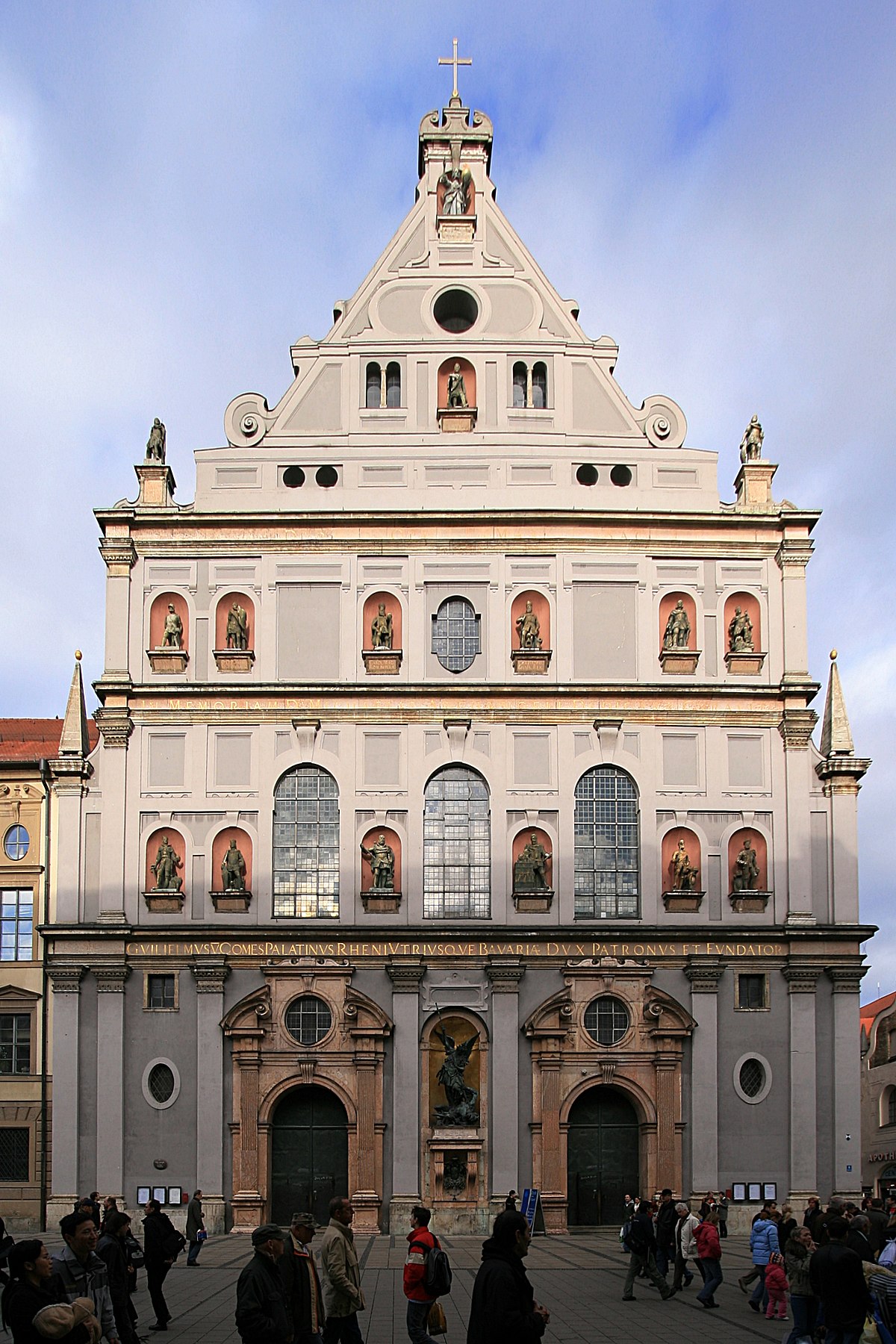 St. Michael’s is a Jesuit church in Munich, southern Germany, the largest Renaissance church north of the Alps. The style of the building had an enormous influence on Southern German early Baroque architecture.
St. Michael’s is a Jesuit church in Munich, southern Germany, the largest Renaissance church north of the Alps. The style of the building had an enormous influence on Southern German early Baroque architecture.

